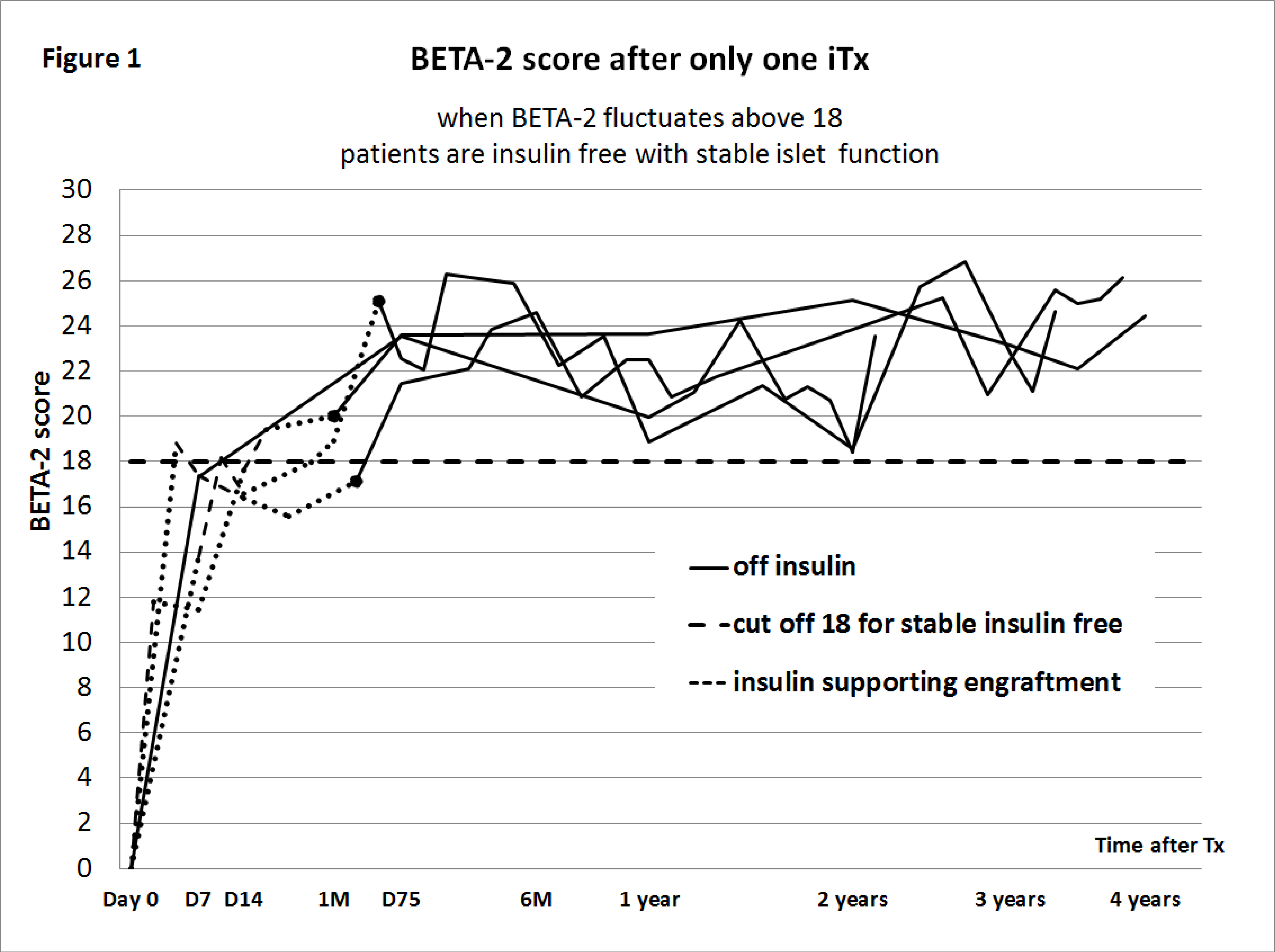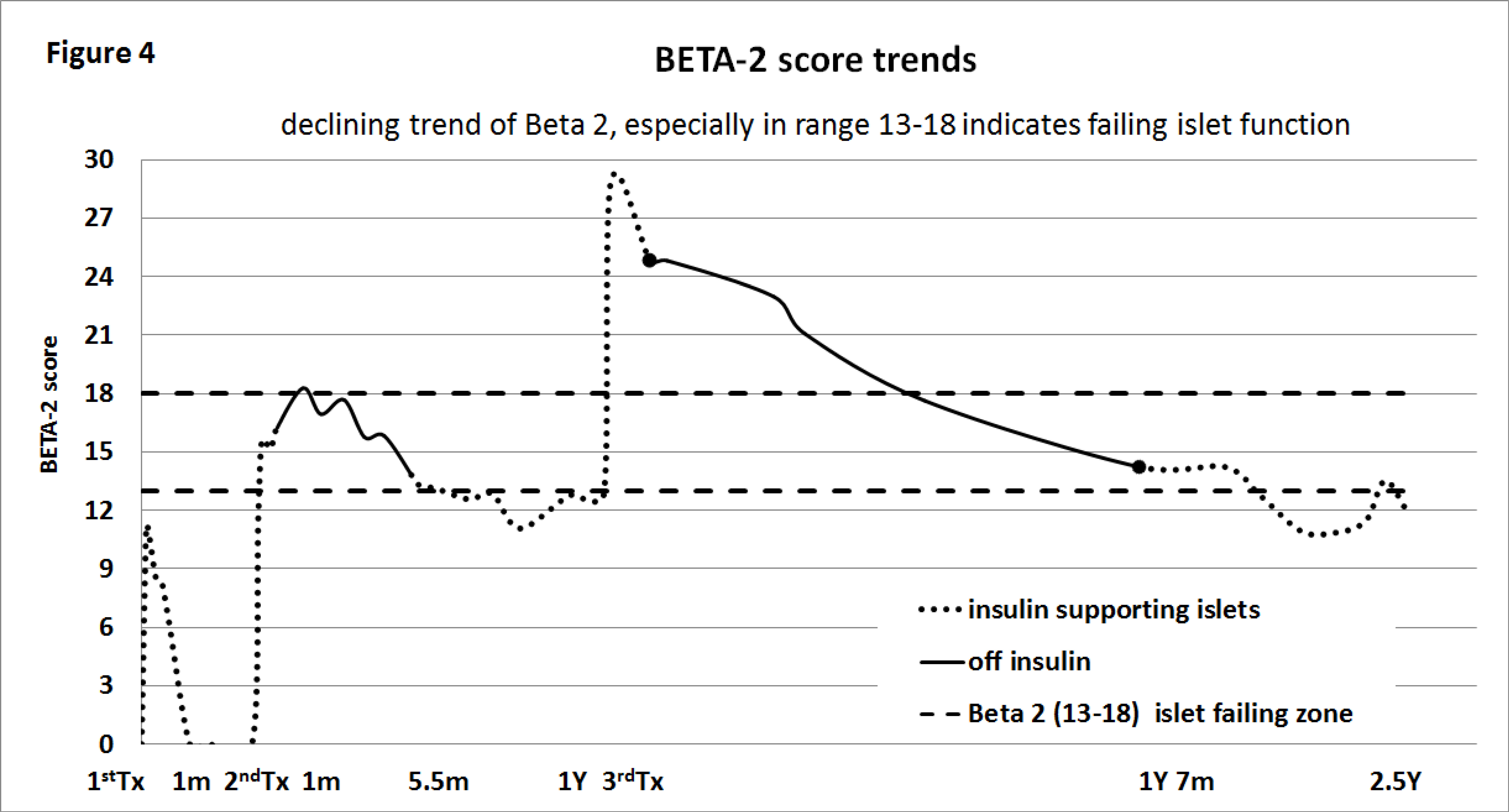BETA-2 Score Allows for Convenient and Precise Monitoring of Islet Function and Early Detection of Islet Dysfunction
Piotr J Bachul1, Justyna Gołębiewska2, Lindsay Basto1, Mark R Kijek1, Natalie Fillman1, Kamil T Cieply1, Karolina Golab1, Ling-Jia Wang1, Martin Tibudan1, Celeste Thomas3, Alicja Dębska-Ślizień2, John Fung1, Piotr Witkowski1.
1Department of Surgery, University of Chicago, Chicago, IL, United States; 2Department of Nephrology, Transplantology and Internal Medicine, Medical University of Gdańsk, Gdańsk, Poland; 3Department of Medicine, University of Chicago, Chicago, IL, United States
Introduction: BETA-2 was developed to more conveniently and precisely assess islet graft function than commonly used beta-score, which requires a stimulation test. After validation of BETA-2 in our cohort of patients in relation to 90-min glucose in a mixed meal tolerance test and beta-score, we decided to assess the practical utility of BETA-2 in monitoring islet allograft function in individual patients.
Methods: We retrospectively analyzed BETA-2 calculations during clinical evaluations in islet allotransplantation (ITx) recipients with up to 3 islet infusions. We specifically looked in reference to previously established BETA-2 cut-offs for the detection of glucose intolerance <18 and insulin independence >13.
Results: We analyzed 298 BETA-2 scores calculated in 14 patients (7 women and 7 men) with an average age of 42.9 ± 9.5 years. In these patients, BETA-2 correlated well with islets function. Four patients, who experienced stable, long-term insulin independence after only one transplant, had a BETA-2 continuously over 18 (Fig 1).

Another 3 patients required a second transplant to reach the same outcome with the same BETA-2 characteristic (Fig 2).

In those patients, despite only discrete changes in fasting glucose level, the BETA-2 decreased to below 18 and continued gradually declining. This drop in BETA-2 always predicted islet dysfunction, the need for insulin support and subsequent transplant, which became clinically obvious as BETA-2 dropped below 13 (Fig 3 and 4).

In the remaining patients, even when BETA-2 eventually reached peak above 18 after subsequent transplant, islet function gradually declined without obvious reason within a year or 2 with BETA-2 below 13 requiring re-introduction of insulin support. (Fig 4).

One of these patients has not been able to stop insulin completely despite 3 subsequent transplants but BETA-2 has never increased above 18, which confirms utility of BETA-2. 12% (14/121) of BETA-2 measurements above 18 were made during the early period after iTx, when insulin was administered irrespectively of beta-cell function, in order to facilitate islet engraftment. In 80.2% of cases (142/177) where BETA-2 value was above the cut-off of 13, patients were off-insulin. The remaining 19.8% were on insulin due to failing islet function with dropping BETA-2 or supporting post infusion islet engraftment as described above. BETA-2 calculations below 13 were in 94.4% (113/121) in patients receiving insulin. Remaining 6.6% of BETA-2 calculations (8/121) were below the cut-off of 13, yet patients were still off insulin due to their non-compliance to the recommendation to resume insulin therapy based on clinically evident suboptimal glucose control.
Conclusion: BETA-2 score, based on only a single fasting blood sample is a very reliable tool for islet function assessment and allows early detection of islet graft decline before obvious clinical symptoms.
This work was supported by the Illinois Department 370 of Public Health Grant “Pancreatic Islet Transplantation” and US Public Health Service Grant DK-020595 to the University of Chicago Diabetes Research and Training Center.
